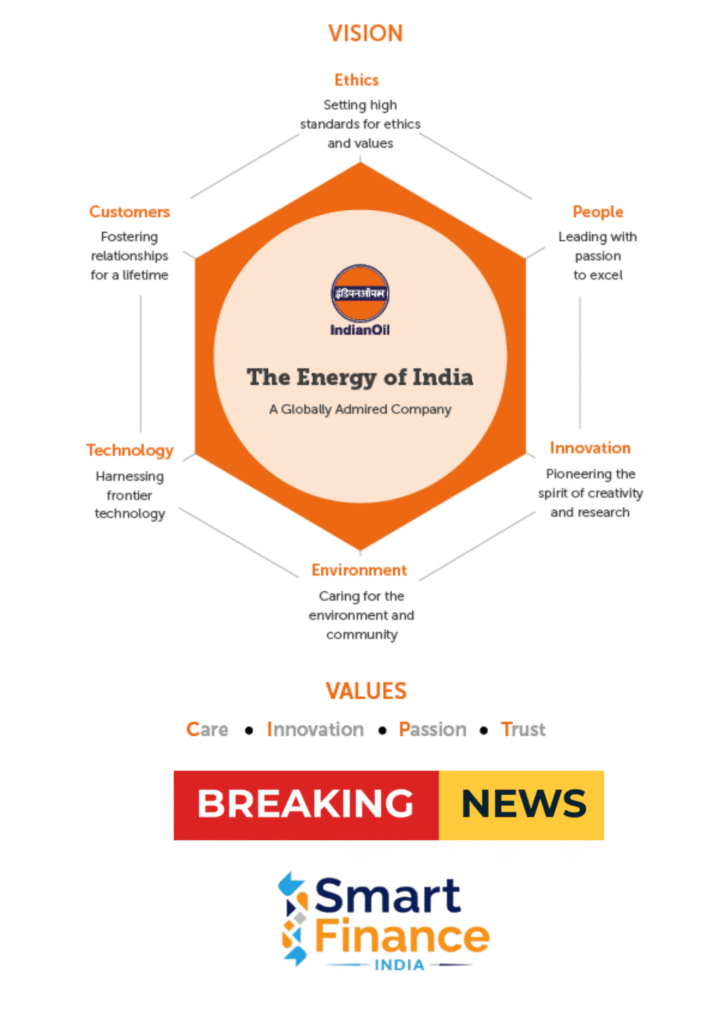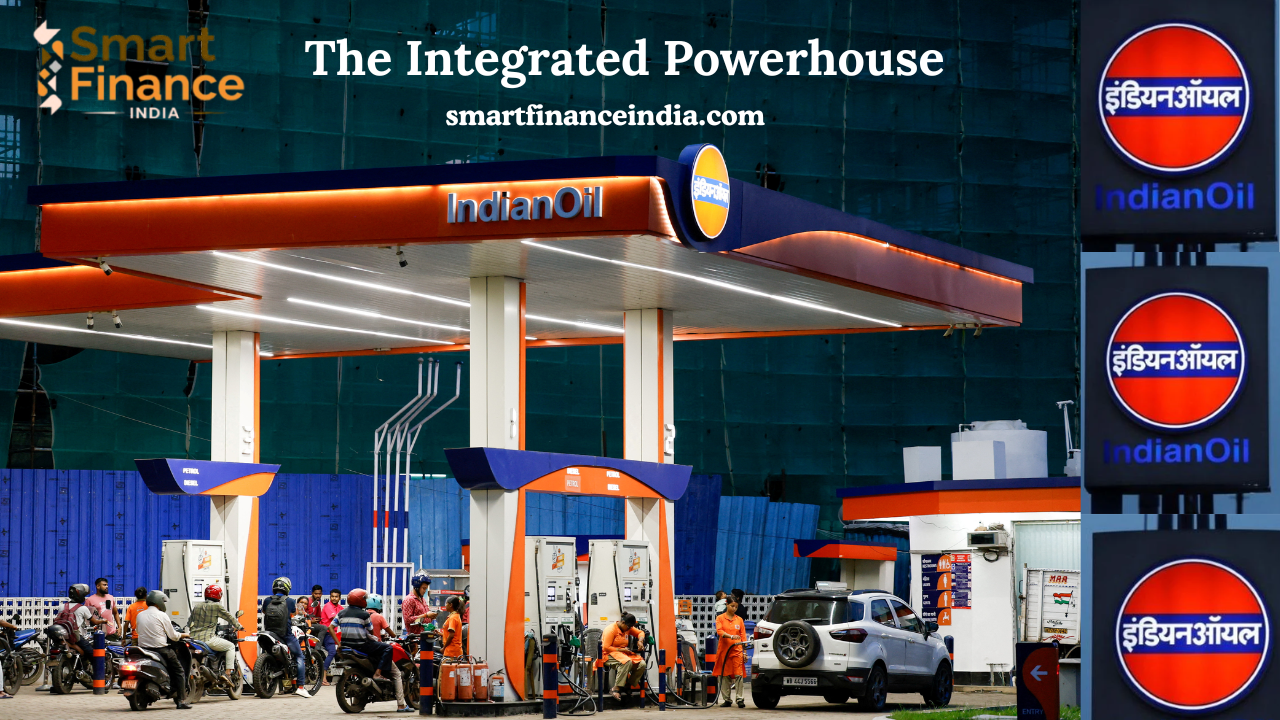In the intricate tapestry of India’s economic and strategic landscape, few threads are as vital and pervasive as that of its energy sector. At the very heart of this sector, fueling the aspirations of over a billion people and powering the engine of the world’s fifth-largest economy, stands a colossus: Indian Oil Corporation Limited, or simply, IndianOil. More than just a corporate entity, IndianOil is a synonym for energy security in India, a testament to the nation’s industrial prowess, and a silent partner in the daily lives of its citizens. From the remote villages of the Northeast to the bustling metropolises of the coast, its presence is an unshakable constant. This is the story of IndianOil—its journey, its vast empire, its challenges, and its unwavering mission to keep India moving.Indian Oil Corporation: The Lifeline of a Nation’s Ascent
The Genesis: Forging a National Asset
The story of IndianOil cannot be divorced from the story of post-independence India. In the 1950s, the country’s refining and marketing infrastructure was fragmented, largely dominated by international oil companies like Esso, Burmah-Shell, and Caltex. The Indian government, driven by the vision of a self-reliant nation, recognized that energy independence was paramount to economic and strategic sovereignty.
The pivotal moment arrived in 1958 with the establishment of Indian Refineries Limited. Its mandate was clear: to build and operate refineries that would process crude oil for the nation. The following year, Indian Oil Company was incorporated to handle the marketing and distribution of petroleum products. This strategic bifurcation—between manufacturing and selling—was soon seen as inefficient. On September 1, 1964, a historic merger consolidated these two entities, birthing the Indian Oil Corporation Limited. From its inception, IndianOil was imbued with a dual identity: that of a commercially driven corporation and a guardian of the nation’s energy interests.
The early years were defined by ambition and grit. IndianOil took over the marketing operations of the foreign companies, which were nationalized in the 1970s. It was a daunting task—integrating networks, building brand loyalty, and, most importantly, creating a supply chain that could cater to a vast and geographically diverse nation. The iconic IndianOil logo, the inimitable IOCL insignia on a red background, began its journey to become one of the most recognized symbols across the Indian subcontinent.
The Integrated Powerhouse: Anatomy of an Oil Major
Today, IndianOil is not just an oil company; it is a fully integrated energy major. Its operations span the entire hydrocarbon value chain, from refining crude oil to selling petrol at the pump station, and increasingly, into alternative energy sources. This vertical integration provides immense resilience and control over its destiny.

1. Refining: The Manufacturing Backbone
IndianOil owns and operates a network of 11 refineries strategically located across India. These include refineries in states like Gujarat (Koyali, the first one), Haryana (Panipat), Uttar Pradesh (Mathura), West Bengal (Haldia), and Assam (Digboi, Guwahati, Bongaigaon). With a combined refining capacity of over 80 million metric tonnes per annum (MMTPA), IndianOil accounts for nearly half of India’s total refining capacity.
These are not mere crude processors; they are sophisticated, complex refineries capable of handling a wide variety of crude oils from across the world. The Panipat Refinery, for instance, is one of the most advanced in Asia, producing vital petrochemical feedstocks that fuel other industries. The refineries are also continuously upgraded to produce cleaner, Bharat Stage VI (BS-VI) grade fuels, demonstrating a commitment to environmental norms.
2. Pipelines: The Arteries of the Nation
If refineries are the heart, pipelines are the arteries. IndianOil owns and operates the largest network of crude oil and product pipelines in India—over 15,000 kilometres of these subterranean lifelines. This network is a marvel of logistics, silently and efficiently moving millions of tonnes of crude from ports to refineries and finished products from refineries to storage terminals deep inland.
Pipelines are the safest, most economical, and most environmentally friendly mode of transporting hydrocarbons. They reduce the massive burden on roads and railways, minimize transit losses, and ensure a steady, uninterrupted supply to regions far from the coast. The Cross-Country Pipeline network is arguably one of IndianOil’s most critical, though least visible, national contributions.
3. Marketing: The Public Face
This is the dimension of IndianOil that every Indian knows. With over 50,000 customer touchpoints, IndianOil’s marketing network is the largest and most extensive in the country. It includes:
- Fuel Stations: The ubiquitous IndianOil petrol pumps, branded as COCO (Company-Owned-Company-Operated) or DOCO (Dealer-Owned-Company-Operated), are a fixture of the Indian landscape. From highways to hill stations, they provide not just fuel, but also amenities like restrooms, convenience stores (Stop ‘n’ Shop), and automated teller machines.
- Indane LPG: IndianOil is the largest player in the liquefied petroleum gas (LPG) market in India. Under the brand Indane, it serves over 80 million households. The iconic “blue cylinder” is a symbol of a energy transition in rural and urban India, replacing traditional, polluting cooking fuels and empowering women with cleaner, safer kitchens. The Pradhan Mantri Ujjwala Yojana (PMUY), a flagship scheme of the government, was massively supported by IndianOil’s distribution might, enabling millions of below-poverty-line families to access LPG connections.
- Aviation Fuel: IndianOil, through its brand Aviation Service, is the leading supplier of jet fuel (ATF) to major domestic and international airlines across Indian airports. Its infrastructure ensures that the nation’s aviation sector remains fueled and efficient.
- Lubricants: Under the brand Servo, IndianOil produces a wide range of high-performance lubricants for automobiles, industrial machinery, marine engines, and even railways. Servo is a trusted name, synonymous with quality and engine protection.
4. Research & Development: The Future-Proofing Engine
Understanding that innovation is key to survival, IndianOil established its far-sighted R&D Centre in Faridabad in 1972. This centre has been the breeding ground for indigenously developed technologies, catalysts, and formulations. From creating custom lubricants for Indian Army tanks operating in extreme conditions at Siachen to developing biofuels from non-edible oils like Jatropha, the R&D wing ensures IndianOil is not just a market follower but a technology creator. Its work in fuel additives, refinery process optimization, and alternative energy is crucial for the corporation’s future trajectory.
5. Petrochemicals: The Value-Addition Play
Moving beyond fuels, IndianOil has made significant forays into petrochemicals—a high-growth, high-margin business. Its Panipat and Paradip complexes produce essential raw materials like polymers (polypropylene, polyethylene), glycols, and paraxylene, which are the building blocks for plastics, textiles, packaging, and countless other industries. This diversification de-risks the business from the volatility of the fuel market and integrates IndianOil deeper into the national manufacturing ecosystem.
6. Global Ventures and Upstream Integration
To secure its crude oil supplies, IndianOil has strategically invested in oil and gas fields abroad in countries like Libya, Nigeria, Russia, and the United Arab Emirates. While India is inherently import-dependent for crude, these upstream investments provide a measure of control over the source and a hedge against price volatility. Furthermore, IndianOil has a growing footprint in the international trading arena, leveraging its expertise to trade crude and products on the global market.
Navigating the Churn: Challenges and Adaptations
The journey of IndianOil has not been without formidable challenges. As a Maharatna Public Sector Undertaking (PSU), it operates at the intersection of commercial profit and public service, a balance that is often difficult to maintain.
The Subsidy Conundrum: For decades, IndianOil was the primary vehicle for implementing the government’s subsidy policy on kerosene and LPG. While this served a social welfare purpose, it placed a massive financial burden on the company’s balance sheet, leading to significant under-recoveries that impacted its ability to invest and modernize. The direct benefit transfer (DBT) scheme and the subsequent deregulation of fuel prices have largely alleviated this burden, allowing for greater commercial freedom.
Volatile Global Markets: IndianOil’s fortunes are inextricably linked to the global crude oil price. A surge in prices squeezes refining margins and increases the working capital required to import crude. The corporation has had to develop sophisticated risk management strategies to hedge against this volatility.
The Green Transition: This is arguably the most existential challenge. The global shift towards renewable energy and electric vehicles (EVs) threatens the core business model of a traditional oil company. IndianOil cannot afford to be a spectator in this energy transition.
The Future is Green: IndianOil’s Energy Transition
IndianOil has proactively embraced the challenge of sustainability. Its vision is evolving from being an “oil major” to an “energy major.” This strategic pivot is evident in its ambitious investments and initiatives:
- Biofuels: IndianOil is at the forefront of India’s biofuel revolution. It is blending ethanol with petrol, as mandated by the government, and is setting up advanced bio-refineries to produce second-generation (2G) ethanol from agricultural waste like rice straw and parali, which also addresses the critical issue of stubble burning and air pollution.
- Hydrogen Economy: Recognizing hydrogen as the fuel of the future, IndianOil is investing heavily in green and blue hydrogen production. It has pilot projects for hydrogen-enriched compressed natural gas (H-CNG) and is building plants to produce hydrogen using renewable energy. This positions it as a future leader in a potentially game-changing energy vector.
- Electric Mobility: Instead of resisting the EV wave, IndianOil is integrating it into its business. Plans are underway to set up battery swapping stations and EV charging points at its vast network of fuel stations, transforming them into multi-energy hubs.
- Solar and Wind Power: The corporation is also building a significant portfolio of renewable power generation to meet its own operational needs and to contribute to the national grid, reducing the carbon footprint of its refineries.
Beyond Business: The Social Contract
IndianOil’s role extends far beyond profits and pipelines. It sees itself as a partner in national development. Its corporate social responsibility (CSR) initiatives are vast and impactful, focusing on:
- Healthcare: Through hospitals, health camps, and initiatives like ‘IndianOil Foundation’, it provides healthcare access to remote communities.
- Education: It awards thousands of scholarships to underprivileged students every year and has adopted schools in needy areas.
- Water Conservation: It has undertaken extensive watershed management projects in water-scarce regions, building check dams and promoting rainwater harvesting.
- Sports Promotion: IndianOil has been a steadfast patron of Indian sports, sponsoring athletes, hockey teams, and marathons.
During natural disasters and the COVID-19 pandemic, IndianOil’s infrastructure and workforce were mobilized at a national scale to ensure an uninterrupted supply of oxygen, fuel, and essential commodities, truly living up to its moniker, “The Energy of India.”
Conclusion: The Indispensable Force
As India marches towards its destiny as a developed nation, its hunger for energy will only grow. IndianOil, with its seven decades of experience, unparalleled infrastructure, and mammoth scale, is uniquely positioned to meet this demand. Its journey mirrors that of the nation itself—from a nascent, aspiring entity to a confident, global player.
The road ahead is complex, fraught with the uncertainties of geopolitics, market fluctuations, and technological disruption. Yet, IndianOil has consistently demonstrated an ability to adapt, innovate, and endure. It is more than a company; it is an institution. It is the fuel in the tractor that tills the field, the gas in the stove that cooks the meal, the avtur in the plane that connects families, and the promise of a greener, more sustainable future. IndianOil is not just the energy of India; it is, in many ways, the lifeline of its ascent.
